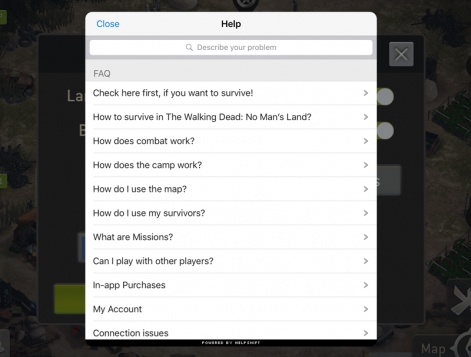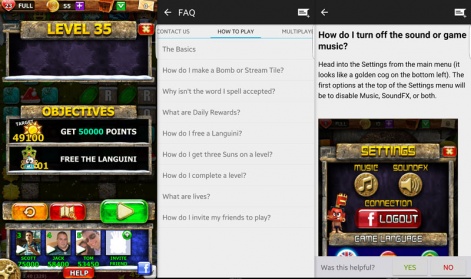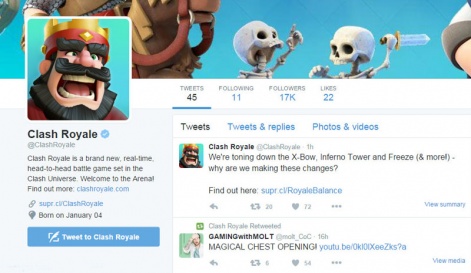The most successful and long-lasting games are those that listen to and care for their players.
In a market where most players never spend in games, player support is often what converts loyal players into spenders and keeps existing payers spending in your game.
Nick Zasowski, Community & Consumer Support Associate Manager at Tilting Point, discusses best practices and essential tools to support your players.
According to a Compuware's study, 80% of apps are deleted after being opened just once - and only 16% of users will give an app more than two uses before uninstalling.
This makes customer support on mobile much more important than any other platform.
While larger games demand a more data-driven CRM approach to segment their audience and provide prioritized support, there are more accessible ways that small and medium sized developers can provide support for their mobile apps.
Link to FAQ and Helpdesk
Most apps will have a "Support" or "Help" button that can be found within the Settings menu.
Upon tapping, users are redirected out of the app to their web browser and the app's FAQ/helpdesk.

In many cases, these sites are not optimized for mobile. While useful information is found here along with how to contact the developer, this method is very disruptive, and there's risk of the user abandoning the process, resulting in the loss of the customer and/or a 1 star review.
Email support
Another common method apps employ is simply listing an email address on their App Store page - without even listing this information anywhere in the game!
Relying solely on inbox support, developers could end up spending more time answering emails and less time making great games.
This is another disruptive method as users have to exit the app and use a number of other apps to find this information and subsequently send a message.
In-app support
The most user friendly method of offering support to players is to provide all the tools and information they would need to receive help from directly within the app itself.
Beyond the inbox
Handling customer support via email is inexpensive and requires very little time to implement, but that doesn't mean it won't get costly later.
On the backend, email support is very limited in issue tracking and player history. Relying solely on inbox support, developers could end up spending more time answering emails and less time making great games.
Fortunately, a wealth of software and services exist to efficiently manage requests, keeping players happy and engaged.
Having a knowledgebase or FAQ using a helpdesk like Zendesk offers the ability to pre-emptively provide information before players contact directly.
This is an effective way to be proactive and mitigate the overall number of support requests received.

Both App Store and Google Play are worldwide storefronts and players will still download your game even if it's not localized into their language.
While nothing beats a native speaking customer support agent, Transfluent is an essential service for developers to provide localized support in a player's language without having to staff someone who speaks that language (or rely on Google Translate).
In-game support
While having in-app help for players is the most ideal scenario, it can require a lot of implementation work across all disciplines. It is also counterintuitive to provide pages of menus for players to sift through to get the information they need.
More companies - including Tilting Point, Supercell, and Zynga - are using Helpshift to be proactive with support and allow players to reach developers from directly within the game.
Responsive developers will really stand out and be remembered.
Aside from an easy-to-update FAQ and a simple contact method, Helpshift truly shines for developers by providing a wealth of useful information when a request is submitted by a player: device model, platform, OS version, and any other piece of trackable game data (configured in the SDK) such as player account info.
This saves valuable time gathering details to troubleshoot and log an issue.
Social media and the neeed to be everywhere
Support doesn't end at the helpdesk or in-app. Players commonly seek out other methods and expect to receive assistance in other places not directly linked with your game.
Facebook, Twitter, forums, blogs… all of these destinations are additional ways players will come to receive help.

Far too often brands and companies do not respond to support inquiries on social media. To monitor these channels, setup keyword searches using Tweetdeck and Google Alerts.
Responsive developers will really stand out and be remembered.
Each support request that you receive is an opportunity to learn more about your players and your game from a player's perspective.
A positive experience will keep your players playing (and paying)!






















